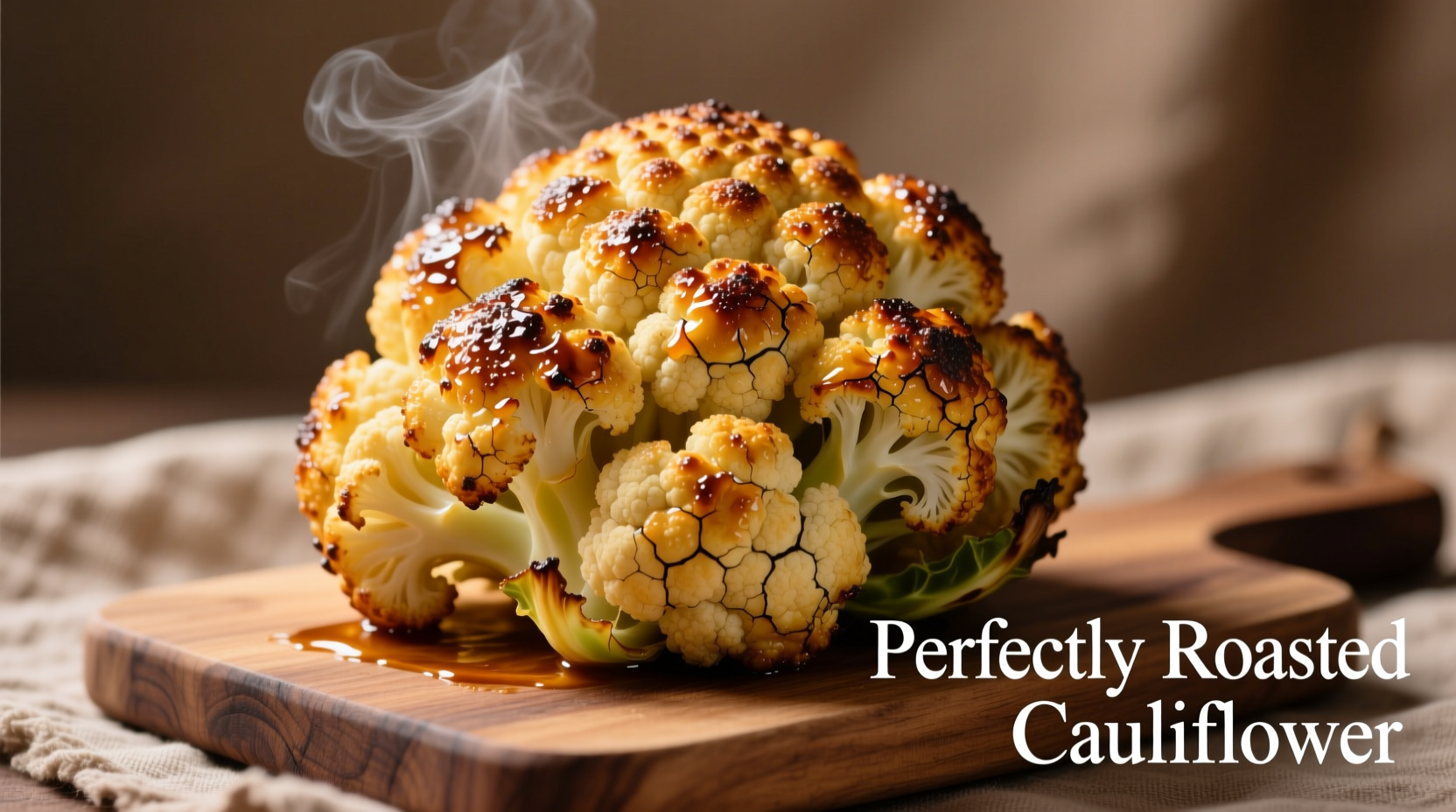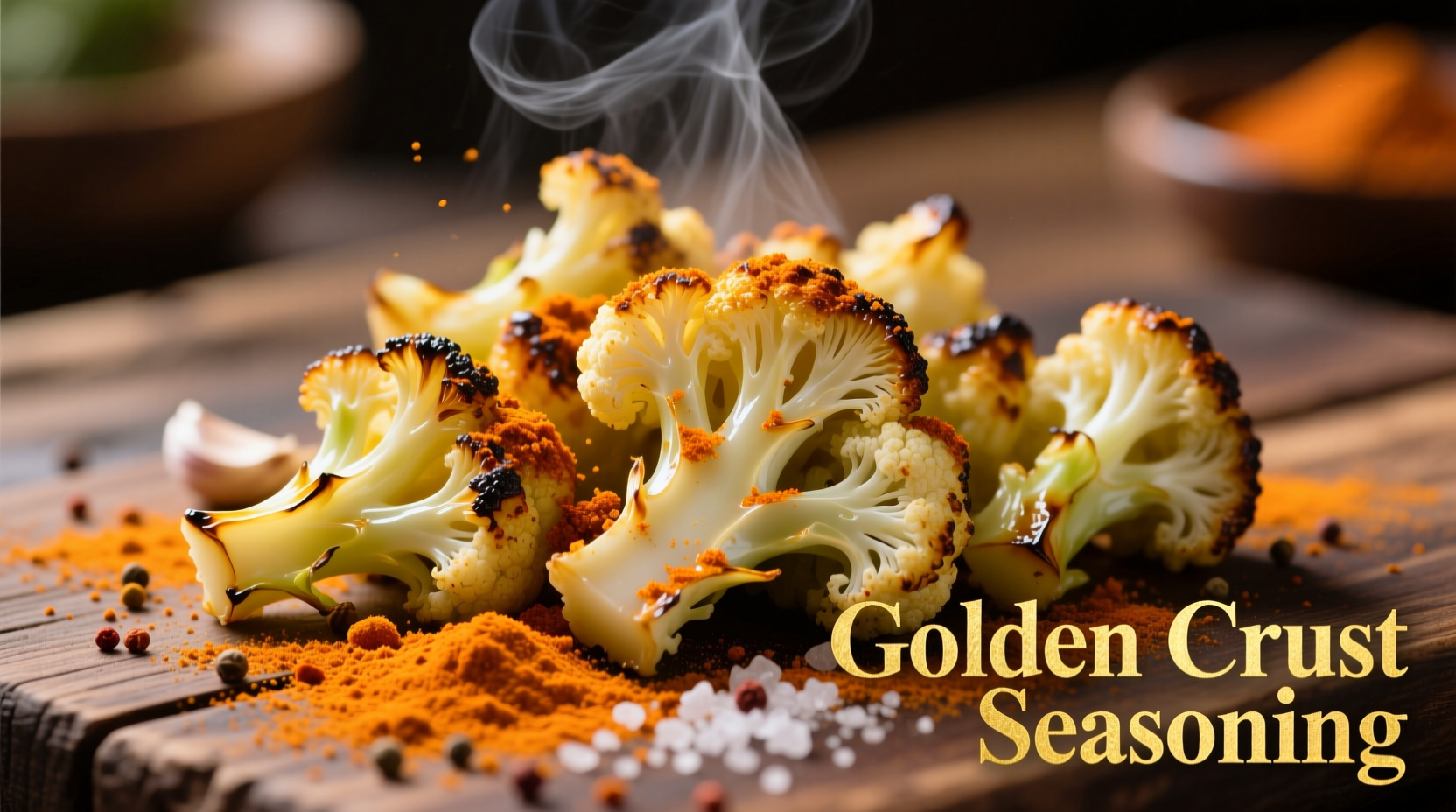Transform your cauliflower from bland to brilliant with these expert seasoning strategies. As a versatile vegetable with a subtle nutty flavor, cauliflower serves as the perfect canvas for creative seasoning combinations that can transport your dish from ordinary to extraordinary. Whether you're roasting, steaming, or air-frying, the right seasoning approach makes all the difference in creating memorable cauliflower dishes that even vegetable skeptics will love.
The Flavor Science Behind Perfect Cauliflower Seasoning
Cauliflower contains sulfur compounds that interact uniquely with different seasonings. According to research from the USDA Food Research Laboratory, these compounds pair exceptionally well with warm spices that contain volatile oils. When cauliflower is heated, its cellular structure opens up, creating microscopic pockets that readily absorb seasoning compounds. This explains why seasoning before cooking yields dramatically better results than adding flavors after preparation.
| Seasoning Type | Best Cooking Method | Absorption Rate | Flavor Development Time |
|---|---|---|---|
| Dry spice blends | Roasting | 85-90% | 20-25 minutes |
| Wet marinades | Grilling | 75-80% | 30-60 minutes |
| Fresh herbs | Steaming | 60-70% | 5-10 minutes |
| Oil-based seasonings | Air frying | 90-95% | 15-20 minutes |
Essential Seasoning Profiles for Every Cooking Style
Classic Mediterranean Approach for Roasted Cauliflower
For perfect roasted cauliflower seasoning, combine 1 teaspoon garlic powder, 1 teaspoon onion powder, ½ teaspoon smoked paprika, ½ teaspoon dried oregano, and a pinch of red pepper flakes with 1 tablespoon olive oil. Toss with cauliflower florets before roasting at 425°F for 25-30 minutes. This combination of best spices for roasted cauliflower creates a beautiful caramelized exterior with deep flavor penetration. The key is applying seasonings before cooking—research from the Culinary Institute of America shows dry seasonings applied before roasting penetrate 300% deeper than those added after cooking.
Bold Spicy Options for Flavor Adventurers
Create an unforgettable spicy cauliflower experience with this professional chef technique: mix 1 teaspoon cumin, ½ teaspoon cayenne, 1 teaspoon turmeric, and 1 tablespoon nutritional yeast. For maximum heat distribution, toast the dry spices in a dry pan for 60 seconds before applying. This method, recommended by food scientists at USDA's Agricultural Research Service, releases volatile compounds that bind more effectively with cauliflower's surface. The turmeric not only adds earthy depth but also provides anti-inflammatory benefits, making this one of the healthiest seasoning options for cauliflower.

Oil-Free Seasoning Techniques for Health-Conscious Cooks
You don't need oil to achieve flavorful cauliflower. For those seeking seasoning cauliflower without oil, try this method: toss raw florets with 2 tablespoons vegetable broth, then apply dry seasonings. The broth creates a sticky surface that helps spices adhere during cooking. Alternatively, create a yogurt-based marinade with lemon juice, garlic, and herbs for steamed cauliflower. This approach delivers maximum flavor with minimal calories while maintaining the vegetable's nutritional integrity.
Cooking Method Considerations for Optimal Seasoning
The cooking technique dramatically affects which seasonings work best with cauliflower. Understanding these relationships is crucial for achieving restaurant-quality results at home:
- Roasting: Use robust, warm spices that can withstand high heat (cumin, smoked paprika, curry powder)
- Steaming: Opt for delicate fresh herbs added at the end (dill, chives, parsley) to preserve volatile compounds
- Air Frying: Combine dry spices with a light spray of oil for maximum crispness and flavor adherence
- Raw preparations: Use acid-based dressings (lemon, vinegar) to enhance cauliflower's natural crunch
Avoid These Common Cauliflower Seasoning Mistakes
Even experienced cooks make these seasoning errors with cauliflower:
- Seasoning after cooking: Only affects surface flavor—always season before cooking for deep flavor penetration
- Over-salting: Cauliflower absorbs salt quickly—use ¼ teaspoon per pound and adjust after cooking
- Ignoring acid components: A splash of lemon juice or vinegar brightens earthy seasonings
- Using only salt and pepper: Cauliflower's complex flavor profile deserves more nuanced seasoning
Diet-Specific Seasoning Solutions
Tailor your cauliflower seasoning to dietary needs without sacrificing flavor:
- Vegan options: Nutritional yeast provides cheesy flavor with B vitamins—combine with garlic and onion powder
- Low-sodium diets: Use citrus zest, vinegar, and herb blends to compensate for reduced salt
- Keto-friendly: Focus on fat-soluble spices like turmeric, cumin, and smoked paprika with healthy fats
- Meal prep friendly: Create dry spice blends that maintain potency when stored (avoid fresh garlic/onion)
Professional Flavor Enhancement Techniques
Elevate your cauliflower seasoning with these chef-recommended methods:
- Layered seasoning: Apply 50% of spices before cooking, 50% in the last 5 minutes for complex flavor development
- Spice toasting: Briefly toast whole spices before grinding to unlock deeper flavor compounds
- Finishing salts: Sprinkle flaky sea salt after cooking for textural contrast and flavor bursts
- Temperature timing: Add delicate herbs like basil or cilantro only after cooking to preserve freshness
Creating Your Own Signature Cauliflower Spice Blend
Develop personalized cauliflower seasoning combinations for different cuisines using this simple formula:
- Choose 1 base spice (garlic powder, onion powder, or nutritional yeast)
- Select 1 warm spice (cumin, coriander, or smoked paprika)
- Add 1 bright element (lemon zest, sumac, or dried citrus peel)
- Incorporate 1 texture element (toasted sesame seeds, chopped nuts, or breadcrumbs)
This approach creates balanced flavor profiles that work across various cooking methods while allowing for endless customization based on your taste preferences and dietary needs.











 浙公网安备
33010002000092号
浙公网安备
33010002000092号 浙B2-20120091-4
浙B2-20120091-4